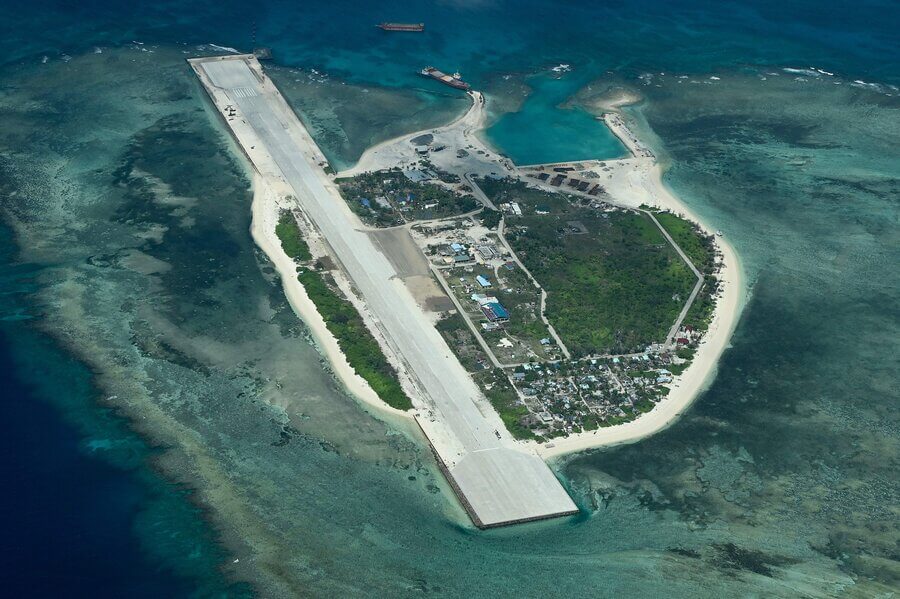Life on Thitu Island: The Philippines’ Frontline in the South China Sea Dispute
Thitu Island, known locally as Pag-asa (meaning “hope” in Tagalog), is a tiny, remote outpost in the Spratly Islands of the South China Sea. Home to nearly 400 Filipino civilians, it stands as both a symbol of national resolve and a flashpoint in one of the world’s most contentious maritime disputes. As China’s presence grows ever closer, the daily lives of Thitu’s residents are shaped by both the promise of opportunity and the shadow of geopolitical tension.
What Makes Thitu Island So Important?
Thitu Island is the largest Philippine-occupied feature in the Spratly archipelago, a cluster of atolls and reefs claimed by six countries: the Philippines, China, Vietnam, Taiwan, Malaysia, and Brunei. The South China Sea is not only a vital international shipping lane but also a major fishing ground and is believed to be rich in oil and natural gas reserves. Control over these waters carries both economic and strategic significance.
China claims almost the entire South China Sea, including areas within the Philippines’ exclusive economic zone (EEZ), based on its so-called “nine-dash line.” In 2016, an international tribunal in The Hague rejected China’s sweeping claims, but Beijing has continued to expand its presence, building artificial islands and military outposts, including the massive base on nearby Subi Reef, just 12 nautical miles from Thitu.
Daily Life on the Edge
Despite the looming threat, life on Thitu is marked by a sense of community and resilience. The island’s population has grown steadily, thanks in part to government incentives such as rice subsidies and free transportation. Homes are simple, often constructed from plywood and scrap metal, and the main livelihoods are fishing, small-scale farming, and government work. Children attend a modest school, and a health clinic staffed by a nurse and midwife provides basic care, though serious medical emergencies require evacuation to the mainland.
Electricity is available for a fee from a diesel generator, and internet access is limited to a public Wi-Fi center. Supplies—everything from rice and vegetables to medicine and fuel—must be shipped or flown in from Palawan, the nearest major Philippine island, making groceries expensive and subject to weather delays. During storms or typhoons, residents rely on stockpiles of canned goods and dried fish.
Community and Patriotism
For many, living on Thitu is an act of patriotism. Elmer Bania, a government worker who moved to the island in 2012, describes the community’s presence as a peaceful form of defiance:
“We’re not going to let China take over Pag-asa. This is our home! Filipinos do not yield to anyone.”
Children, too, are inspired by the island’s unique role. Many dream of joining the military to defend their homeland, reflecting a sense of duty that permeates daily life.
Living Under Constant Watch
Chinese ships are a constant presence just beyond the horizon, often shadowing Filipino fishing boats or idling near the pier. Residents report seeing Chinese coast guard vessels, drones, and even helicopters monitoring their activities. The threat is not just theoretical—incidents of Chinese ships blocking or chasing Filipino fishermen are common, and recent years have seen dangerous confrontations, including ramming and water cannon attacks on Philippine vessels elsewhere in the Spratlys.
To bolster their preparedness, male residents have received basic military training from the Philippine armed forces stationed on the island. Community drills and lectures on security and environmental issues are now part of life, and even children are taught to be vigilant.
Impact on Livelihoods
Fishing, once the backbone of Thitu’s economy, has become increasingly difficult. Chinese patrols have forced local fishermen to stay closer to shore, where catches are smaller. Areas near Sandy Cay and other sandbars are now effectively off-limits due to the risk of confrontation. As a result, some families have diversified their income, with women taking on new roles in government, gardening, and small businesses.
Noraida Badilla, who moved to Thitu in 2009, now works for the municipal government growing vegetables, supplementing her husband’s shrinking fishing income. The rise of women as breadwinners and community leaders is a notable shift, reflecting both necessity and empowerment.
Building a Community—and a Claim
The Philippine government has encouraged civilian settlement on Thitu as a way to strengthen its sovereignty claim. Since opening the island to civilians in 2002, and to tourists in 2023, infrastructure has slowly improved. A concrete runway, sheltered port, new school buildings, and a health center are under construction. Some residents have turned their homes into homestays for visitors, and local associations are planning bakeries and souvenir shops to support tourism.
Despite these developments, life remains challenging. There is no running water in homes, and electricity is limited. Pregnant women must return to the mainland for childbirth, and most children leave the island for higher education. Yet, for many, the sense of purpose and community outweighs the hardships.
Women at the Forefront
As fishing becomes riskier, women have stepped into new roles, running gardens, food stalls, and even clinics. The Spratly’s Strong and Brave Women Association (SSBWA) is set to operate a bakery and manage homestays, further integrating women into the island’s economic and social fabric. Experts note that this shift is empowering women and changing traditional gender roles in the community.
Facing the Future: Tensions and Resolve
Thitu’s residents live with the knowledge that their island is a frontline in a much larger geopolitical contest. The Philippine military maintains a presence, and infrastructure upgrades continue, but the gap with China’s massive artificial islands and military bases is stark. Still, the resolve of Thitu’s people is unwavering.
As Larry Hugo, head of the local fisherfolk association, puts it:
“We will not leave the island, no matter what happens.”
For many, the island is not just a home but a statement of national identity and hope for the future.
In Summary
- Thitu Island (Pag-asa) is the largest Philippine-occupied feature in the disputed Spratly Islands, home to nearly 400 civilians.
- Residents face daily challenges from Chinese maritime presence, which restricts fishing and heightens security concerns.
- Life on the island is simple but resilient, with basic infrastructure, limited supplies, and a strong sense of community and patriotism.
- Women are increasingly taking on leadership and economic roles as traditional livelihoods are disrupted.
- The Philippine government is investing in infrastructure and encouraging civilian settlement to strengthen its sovereignty claim.
- Despite hardships and ongoing tensions, Thitu’s residents remain determined to stay, seeing their presence as vital to the nation’s interests.












